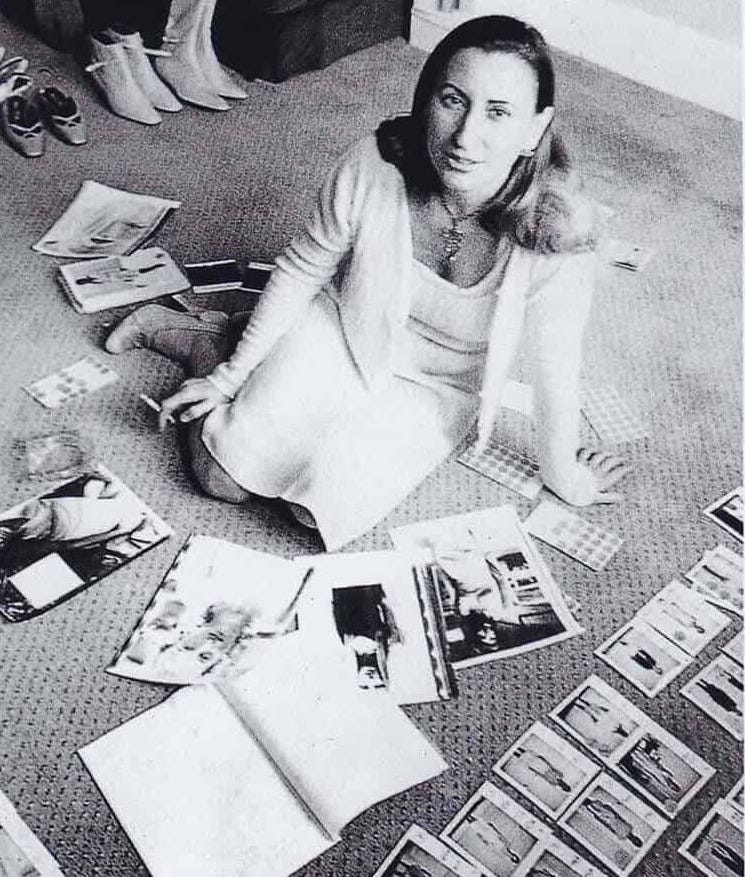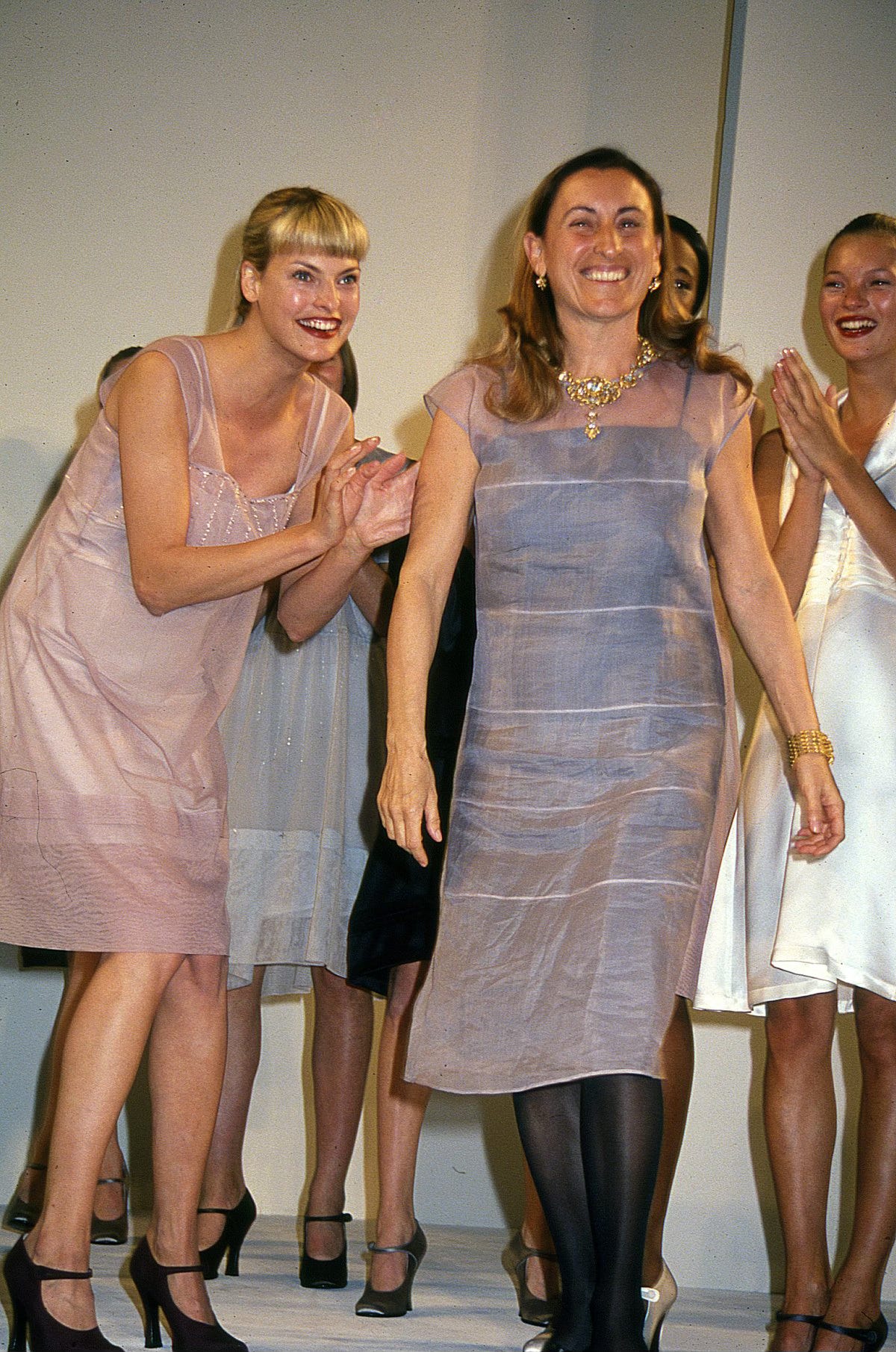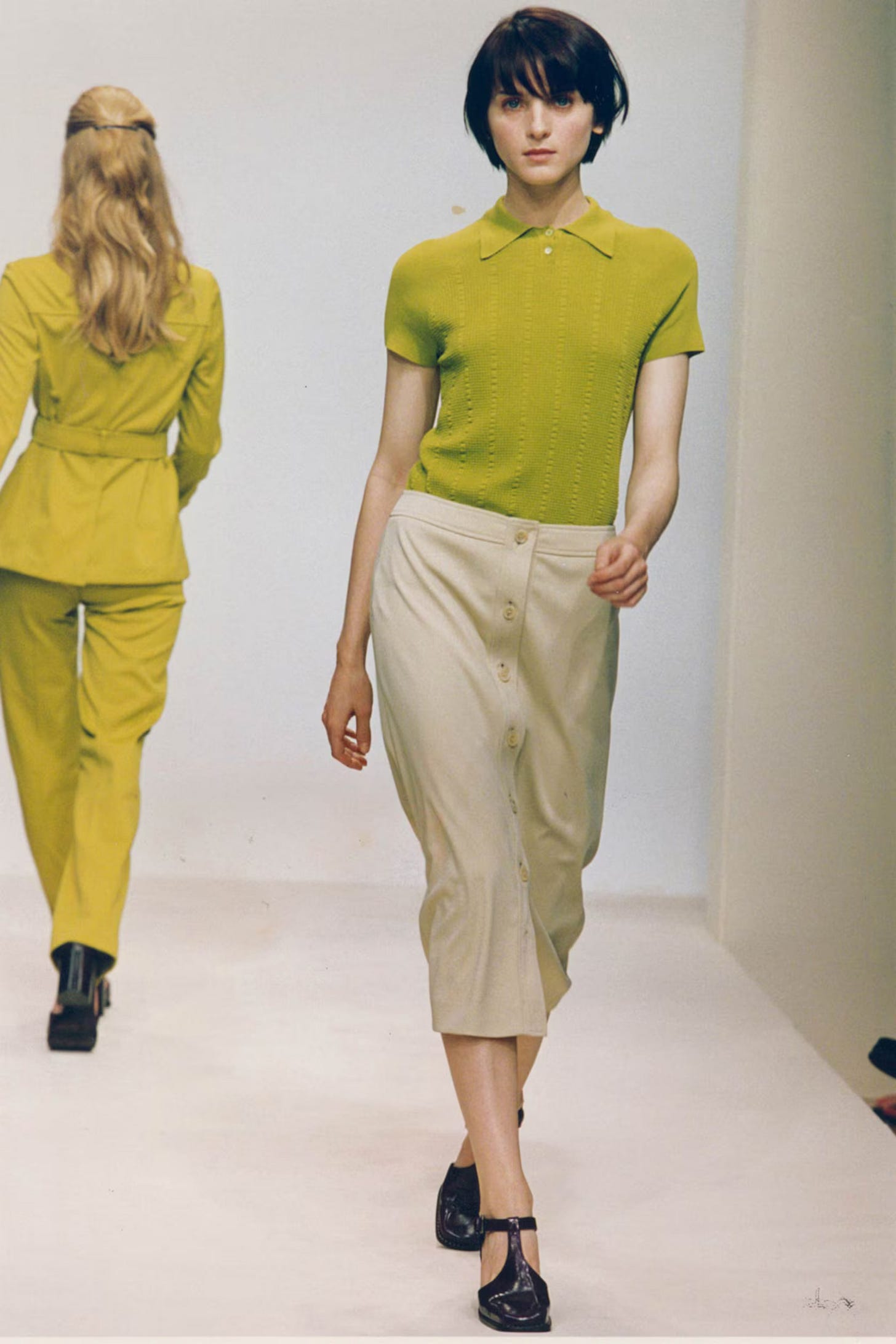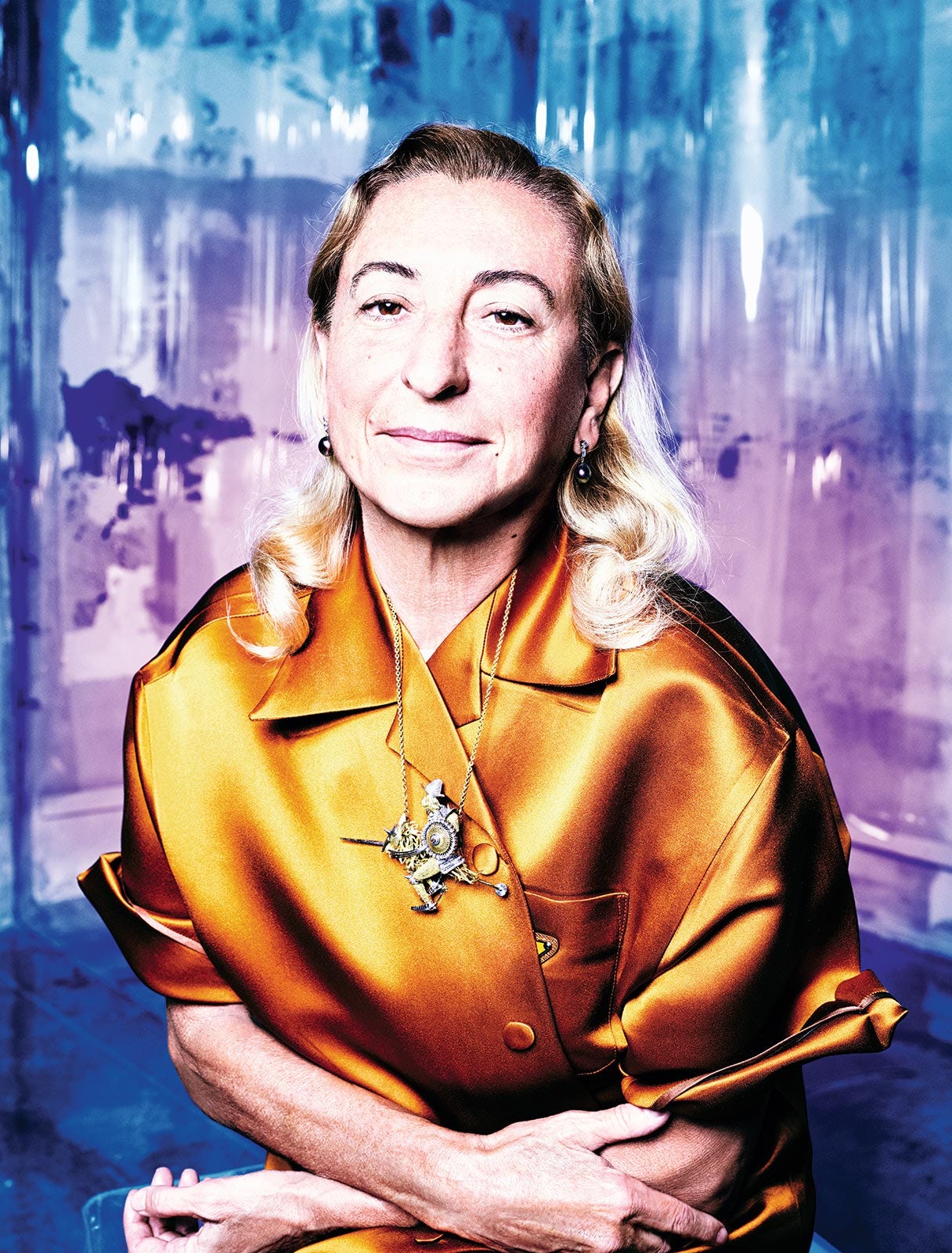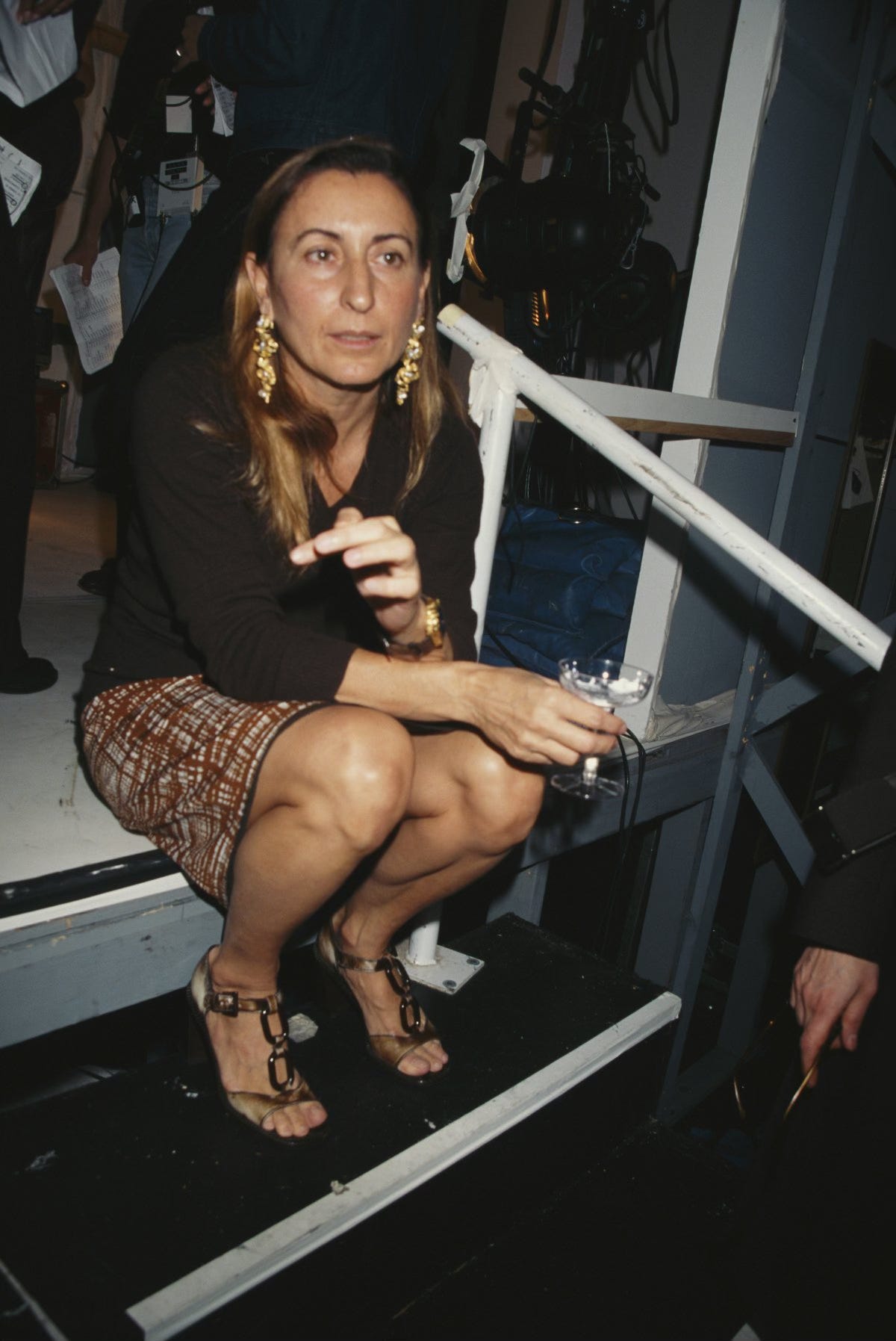Prada: a fashion powerhouse. Alongside the names of Gucci, Chanel, Dior, Versace, it’s associated with one primary concept: money - and lots of it. Followed closely by glamour, luxury, elegance, and a general understanding that owning an item from a brand like Prada means that you supposedly “know your stuff” when it comes to fashion. A fashion intellect, with money to spend and indulge in.
The evolution of Prada into what it is today began in the late 70s, when Miuccia Prada, granddaughter of the original founder of the brand itself, took over the ‘family business’ - and put her own mark on it, permanently.
Born in 1949 as Maria Prada, Miuccia didn’t originally intend to pursue fashion as a career. She studied political science at university, was an active supporter of the Italian Communist party, and had spent her life being generally rebellious and outspoken. An innovative designer in the making, she always had a keen interest in fashion, but didn’t pursue it further until 1978 when she took over Prada after her mother’s retirement. Until that point, Prada had primarily been a brand that sold leather goods: handbags, briefcases, luggage, as well as being the official supplier to the Italian Royal Family. Miuccia intended to change that.
Her first noticeable breakthrough came with her introduction of the now-iconic nylon backpack in 1984 - by opting to use nylon, a typically utilitarian, practical material, instead of traditional Prada leather, she had taken the company in a complete left turn - and one for the better. This risk-turned-success proved that Miuccia had big plans for her grandfather’s company, and by combining her intellectualism with her adoration for fashion, she was going to re-invent Prada into something never before seen.
Her biggest experiment, though, came with the Spring/Summer 1996 collection titled ‘Banal Eccentricity’, and was the beginning of Prada’s definitive ‘ugly chic’ era. Perhaps one of Prada’s most iconic runways - Miuccia managed to cultivate style and elegance through tweed patterns, bold shades of avocado and chartreuse, deconstructed shapes and oversized elements of everyday clothing, all modelled by women with figures and walks that didn’t scream ‘look at me’ but more acted as vessels for the clothes they were ‘performing’ in. It was a huge risk, showcasing garments that came across ‘nerdy’, ‘clunky’, and ‘unfashionable’. But beyond all odds, it worked, and it changed fashion and runway culture forever.
Touching again on the kinds of models that Miuccia favoured in her runways, it’s easy to spot a few negative aspects amongst the trailblazing she was doing for the fashion world. Miuccia didn’t like the ‘glamour’ and ‘stereotypical beauty’ of models at the time, so she flooded her shows with androgynous, slim figures, minimal makeup, and chiseled, hooded-eye faces (Kate Moss, Kristen McMenamy, Amber Valletta). Whilst this revolutionary tactic moved runways away from the hyper feminine illusion the world of fashion was foremost adopting, it also brought about some negative aspects that still linger in runways today; primarily, that most of the models are thin, similar in appearance, and white. This lack of diversity wasn’t brought about by Miuccia’s influence alone, but her runways were a strong contender for a definitive shift in female beauty and how women’s bodies were perceived at the time, both positively and negatively.
However, I would argue that Miuccia’s most lasting effect on modern fashion would be this: accessibility. More simply put; making the brand of Prada more affordable and wearable for everyone, not just the ruling class. By introducing more ‘practical’ materials like nylon into her main collections, Miuccia was telling her audience, ‘my brand is for everyone. For everyday. Glamour isn’t just for the elite’.
The brand of Prada and its little sister Miu Miu would look very different today if it weren’t for Miuccia. In fact, Miu Miu wouldn’t even exist without her. It delves into Miuccia’s younger, fresh psyche in a way that she can’t showcase with Prada, in order to keep up the brand’s appearance of a classic reputation. But even with that outlet, Miuccia changed Prada’s trajectory forever, making it more accessible for everyone in the modern world.
If we compare today’s vision of Prada with other big names - Gucci, for example - we can see that despite adapting to modern demands in terms of what’s trending, expanding from high fashion to more everyday wear, Prada still comes out on top. Most recently this year, Gucci hosted a ‘garden party’ in collaboration with Emily Ratajkowski at Maidstone, with all of their big-name guests dressed in Gucci but looking rather, well… bland. Flashback to a similar collection after-party the brand threw back in 2017, and each guest looks like a cultivated wildflower - patterns, colours, shapes, silhouettes. A tank top and patent leather shorts (Sarah Pidegon), whilst sleek and summer-appropriate, is not what you’d expect a high fashion brand to dress their guests in for an event as noticeable as this one
Prada, on the other hand, debuted their Fall/Winter 2025 collection at Milan fashion week, and knocked it out of the park yet again. Unique silhouettes made from basic dress shapes, deconstructions of outfits that make everyday office wear look like costumes in the most stylish way, a constant dialogue on femininity, beauty, the modern standard for women and how Prada aims to challenge it. Yet again, Raf Simons and Miuccia Prada presented themselves and their art to the world as the formidable, ever-evolving duo that they are.
I also think something I noticed about Miuccia’s influence over the decades was that, first and foremost, she was and is an academic. She didn’t originally want to inherit her family’s legacy. Granted, she always had a deep love for fashion, but not as deep as her desire to fight for what was right, align herself with political parties she strongly backed, and take part in protests. I think what is most influential in Miuccia’s takeover, for me, is her silent defiance against the age-old trope that a woman can only be ‘one thing’. An academic, or a fashionista. A healthcare professional, or a free-spirited creative. A mother, or an independent woman. Never both. Miuccia’s own being, infused with her defying, unique creations that challenge traditional femininity, clash societal stereotypes and bring to the forefront colours and patterns that are considered, typically, as ‘geeky’, challenged that trope directly. In an era where sleek, minimalist, ‘traditional’ items were the height of fashion, Miuccia burst onto the scene with ugly chic and trademarked it as Prada’s ‘thing’ forevermore.
It’s ironic, that for so long, women’s fashion was, really, catered towards the male gaze. They weren’t the ones wearing it, or buying it, but nonetheless, like most things, women’s personalities via what they wore were inclined towards what men wanted to see in a woman. Miuccia changed that, and had no qualms doing so. Women’s clothing isn’t just for display - it requires functionality, practicality, as well as style. And that’s always been the way. Miuccia Prada was just bold enough to bring it to the forefront of society’s high fashion market. In a world where people expect more and more experimentation from fashion brands, expect them to keep up with the political, social, cultural climates and still come across stylish, Miuccia has proved herself time and time again and made it clear she’s not going anywhere, and she will continue to make waves for a long time yet to come.
Edited by Lilli Eve
References:
https://ottodisanpietro.com/blogs/editorial/blog-miuccia-prada-the-silent-revolution
https://www.anothermag.com/fashion-beauty/9740/when-mid-90s-prada-made-ugly-chic
https://www.prada.com/gb/en/pradasphere/fashion-shows/1996/ss-womenswear.html
https://sparkmagazinetx.com/The-Prada-Woman-vs-The-Miu-Miu-Girl
https://prezi.com/p/4fh9wvxiaqh8/the-prada-effect-influencing-the-iconic-1990s-fashion-runway/



